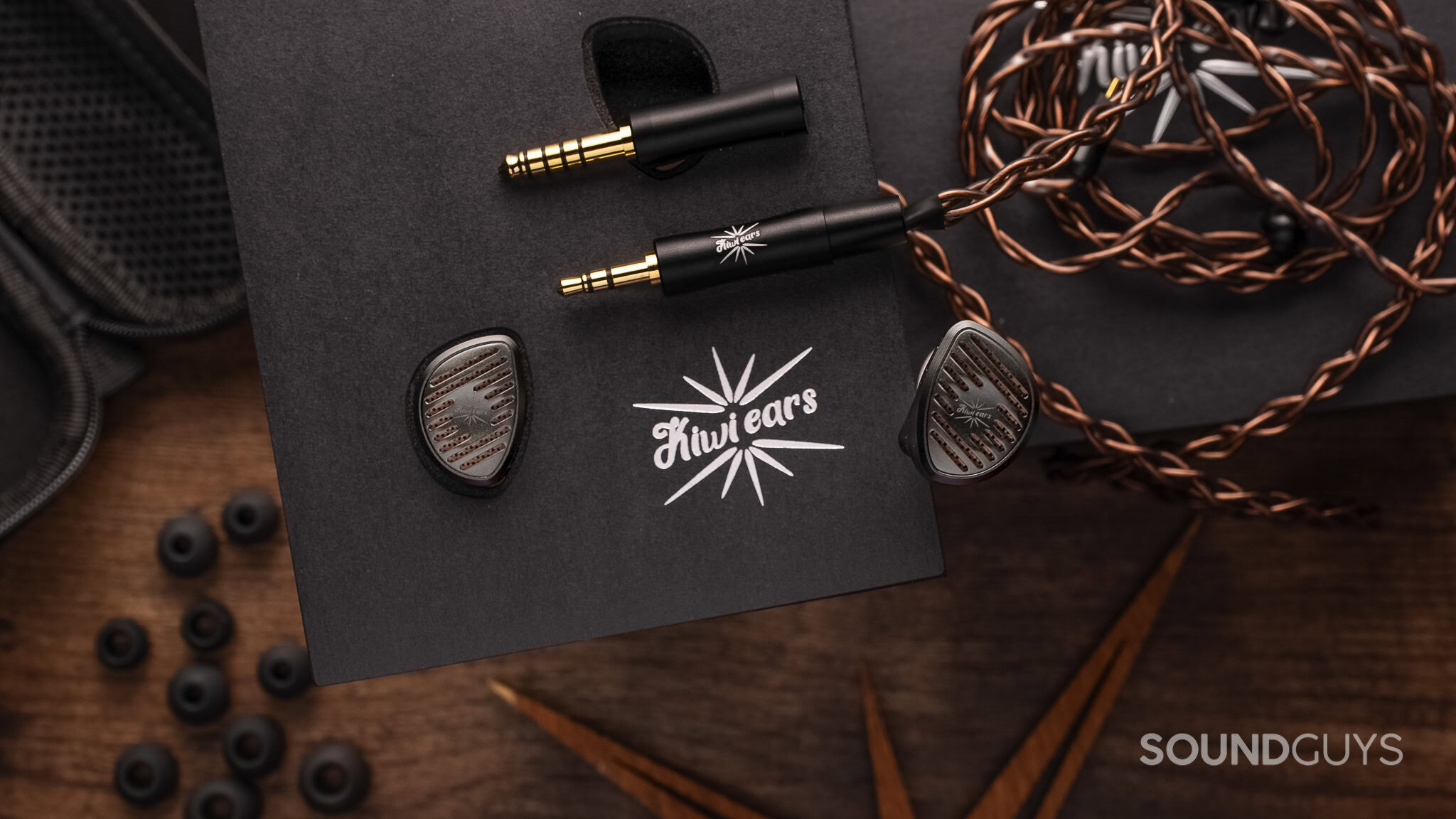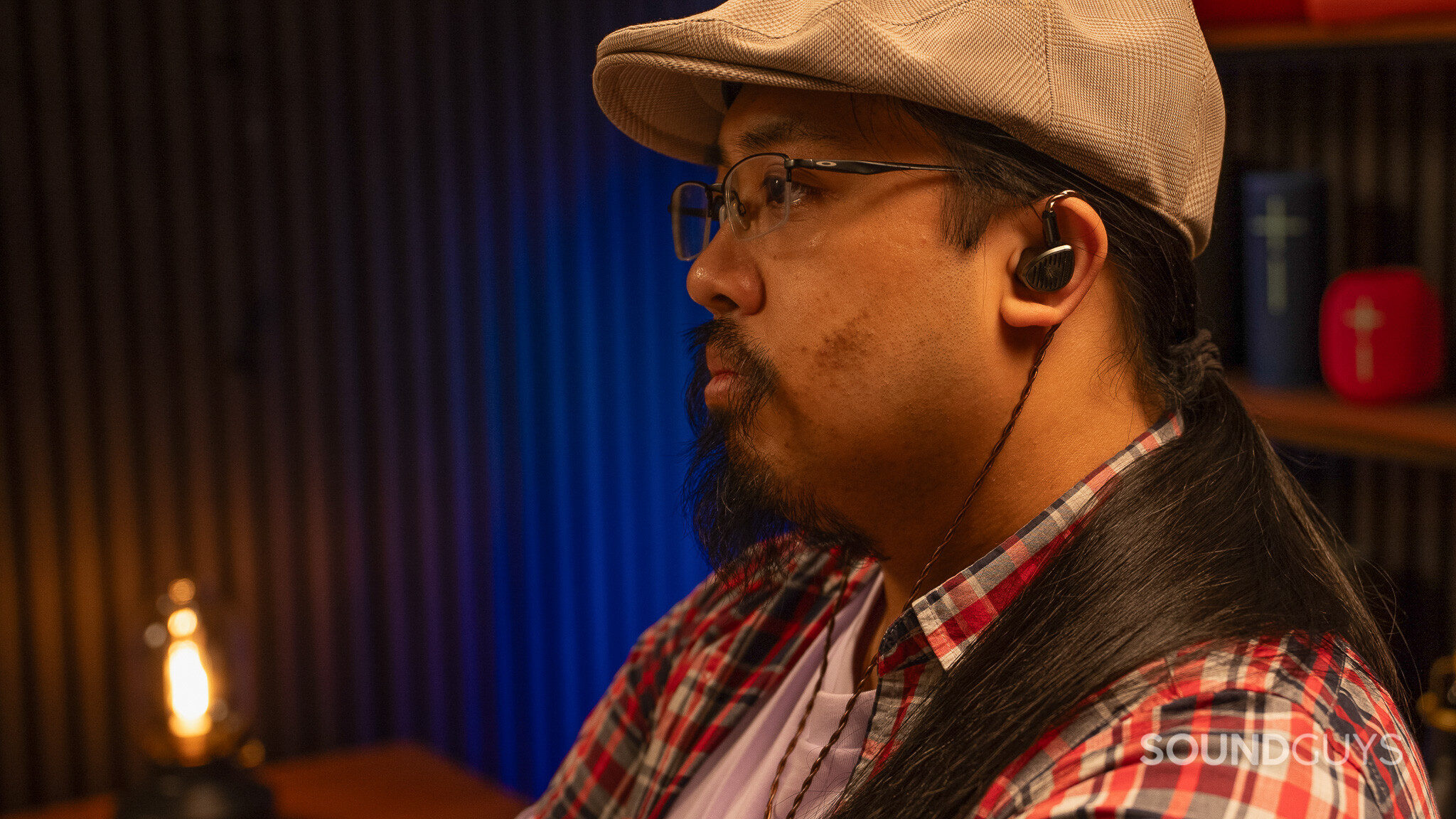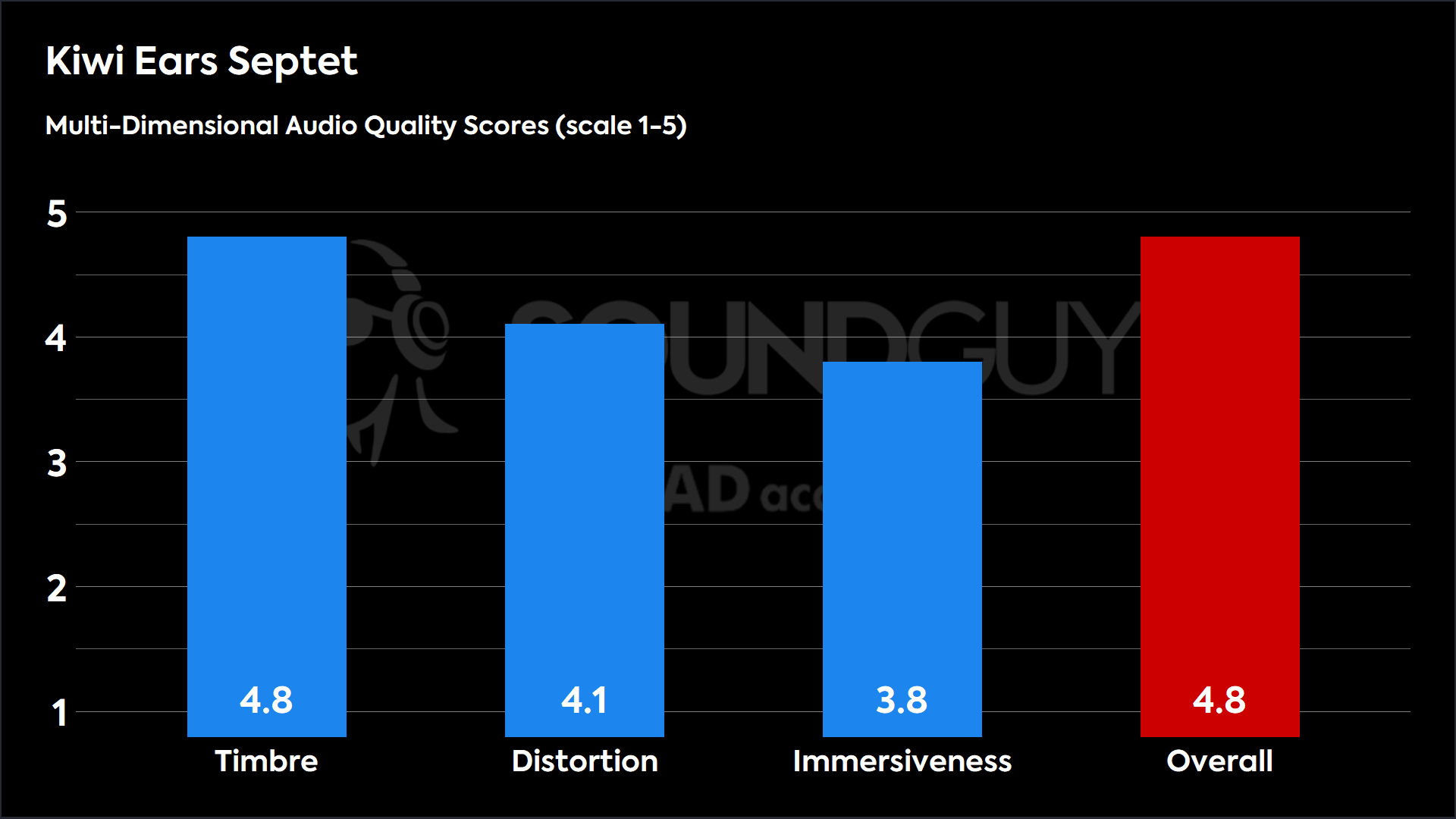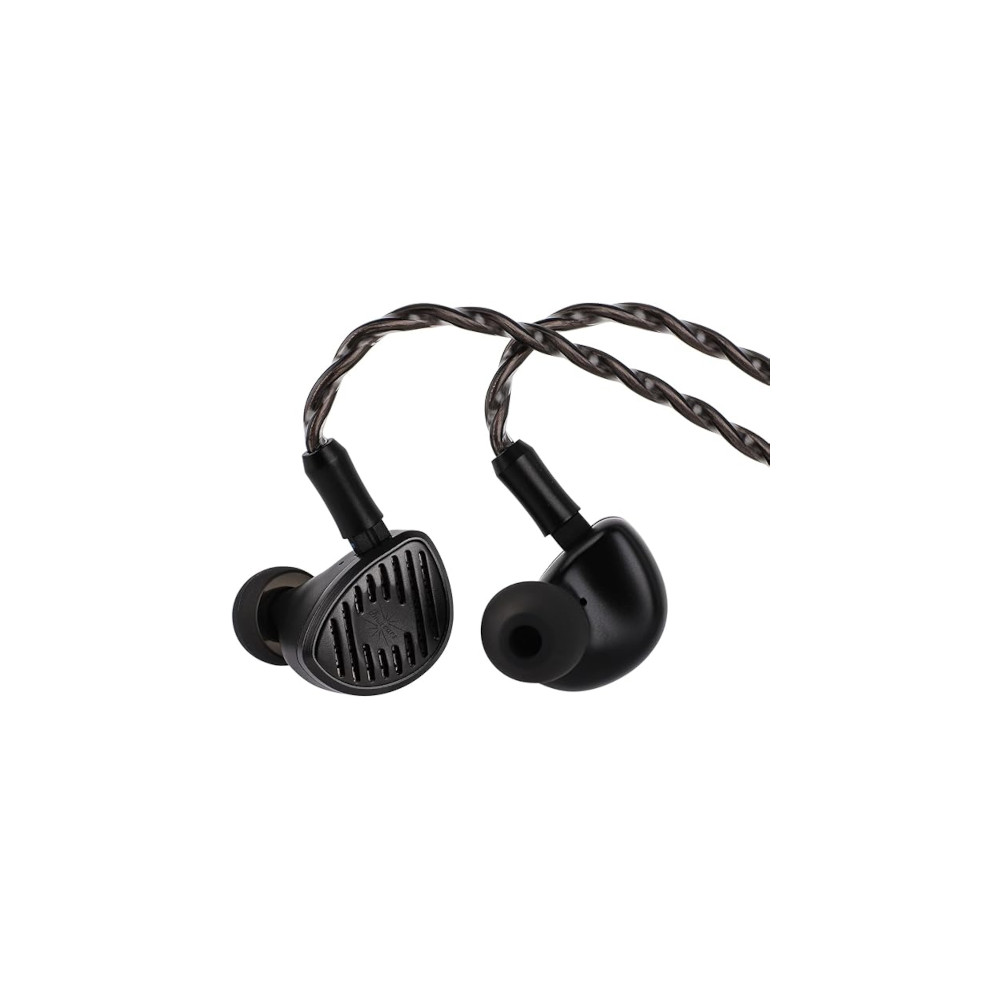All products featured are independently chosen by us. However, SoundGuys may receive a commission on orders placed through its retail links. See our ethics statement.


Do more drivers equal better sound? - Kiwi Ears Septet review
July 24, 2025


Kiwi Ears Septet
Weight: 36g
The Kiwi Ears Septet is an open-back, 7-driver in-ear monitor (IEM) that features a large combination of drivers, including the relatively novel miniature piezoelectric (PZT) drivers. Although PZT drivers have been around since the 1880s and are commonly used in speakers, their application in IEMs is recent and uncommon. Typically, PZT drivers are used in speakers to cover the high-frequency range. So, does this innovative seven-driver configuration provide an enjoyable audio experience in IEMs?
The Kiwi Ears Septet is for those who want a premium music listening experience. If you are seeking wired earbuds with a detailed sound that slightly amplifies bass and treble, the Kiwi Ears Septet might be for you.
This article was published on July 24, 2025, and this is the first version of the article. Updates will follow as the market changes.
What’s it like to use the Kiwi Ears Septet?

The Kiwi Ears Septet comes in a nice box that showcases the brown tones of the chassis. The Septet themselves are made of mostly metal, with an open grill that doesn’t noticeably leak sound or allow much sound to pass through. The brown earth tone underneath the industrial-looking grill is a good juxtaposition to my eyes. The design isn’t too loud and attention-grabbing. Despite being made of metal, it feels light in the ears.
Seeing more than one type of driver technology in a single chassis isn’t too uncommon. The drivers in the Kiwi Ears Septet include a single dynamic driver, four balanced armatures, a planar magnetic driver, and last and most interestingly, a piezoelectric (PZT) driver. The uncommon part is the combination of planar and PZT drivers. We are starting to see more of this combination in more affordable IEMs. This can come as an interesting experience, and I’m excited to see where this can lead in the future.
The included cable doesn’t have an inline mic, but an interchangeable end. In the box you get the regular 3.5mm pre-install and 4.4mm penteconn termination in the box, for you to change. You would think that pulling the end out of a dedicated DAC will end up with you pulling the cable out of the receptacle, but it stays put because of the design. Even though there isn’t any locking mechanism, the friction fit and design don’t pose any issues in regular use. I never end up accidentally pulling the cable out of the termination. The cable itself is soft and supple, but doesn’t tangle easily.
Oh yes, there’s the carry case that I never use, larger and thicker than most wireless earbud cases. There are six different pairs of silicone eartips, which means you’re likely to find an eartip that fits into your ear canal. Fair warning, they can go in pretty deep. It’s part of the issues I have with the fit of the Kiwi Ears Septet, but it’s not horribly uncomfortable when putting them on initially. Sadly, wearing them for a long time at over 4 hours, started to become painful against the shape of my ears. They are on the larger side, but to be fair, they are housing 7 drivers in that chassis. The earhooks of the cable were annoying as they kept rubbing against the back of my ears. I did attempt to twist them into a more comfortable position, but the earhooks slowly moved back to their original position.
What are the best features of the Kiwi Ears Septet?

One of the best features that comes with the Kiwi Ears Septet is the interchangeable termination jack. It’s nice that you can use both a balanced 4.4mm penteconn, or the regular 3.5mm jack we’re all familiar with.
Do the Kiwi Ears Septet need an Amp?
The Kiwi Ears don’t need a dedicated amplifier to drive enough volume. It is slightly harder to run at 15Ω compared to most IEMs at 12Ω, which is not that much harder to drive that I felt the need for an external amp.
How well do the Kiwi Ears Septet block out noise?
Loading chart ...
The passive isolation on the Kiwi Ears Septet blocks out a decent amount of noise, despite being called an open-back IEM. They’re close to isolating just as much as most IEMs with a proper seal. The humdrum of the city, the whooshing by of cars, and the murmur of people talking fade away in the background. High-pitched noise, such as the screeching of brakes, or crying of children, is no longer painfully ear-piercing but still noticeable. According to our testing, the Septet block out up to 10 dB of low frequency noise, up to 25dB of mid frequency noise, and up to 35dB for the high frequencies. Overall, the Kiwi Ears Septet block out an average of 71% of sound, which makes them usable in a wide variety of environments.
How do the Kiwi Ears Septet sound?
The Kiwi Ears Septet are not without their issues, but overall, these IEMs have a full and detailed sound.
Multi-Dimensional Audio Quality Scores (MDAQS)
The chart below shows how the Multi-Dimensional Audio Quality Score (MDAQS) algorithm from HEAD acoustics assesses the sound of the Kiwi Ears Septet. The sound quality is rated on a scale from 1.0 (very bad) to 5.0 (very good).

Timbre (MOS-T) represents how faithfully the headphones reproduce the frequency spectrum and temporal resolution (timing information).
Distortion (MOS-D) represents non-linearities and added noise: higher scores mean cleaner reproduction.
Immersiveness (MOS-I) represents perceived source width and positioning: how well virtual sound sources are defined in three-dimensional space.
See here for an explanation of MDAQS, how it works, and how it was developed.
In MDAQS sound quality testing, the Kiwi Ears Septet score very high with a 4.8 overall, meaning most people will like the way they sound. The high Timbre score indicates that most people will enjoy the sound of the Septet straight out of the box, without needing to use an EQ. The Distortion score is above the average for IEMs, and most people are unlikely to notice issues with how the Septet sounds. The Immersiveness score is above the average for IEMs, and most people are likely able to tell the location of the source of sound when listening to the Septet.
Reviewer’s notes
Editor’s note: this review uses a hover-enabled glossary to describe sound quality based on a consensus vocabulary. You can read about it here.
Objective Measurements
Loading chart ...
Looking at the Kiwi Ears Septet frequency response, it follows the SoundGuys Headphone Preference Curve very closely. There’s a slight bump in the sub-bass up to 55Hz by only around 2db higher, which is considered to be the point where most people will find a noticeable difference in volume. The mids follow closely with our preference curve. The treble is where the frequency response deviates from our target. There’s an emphasis from 4kHz to 8kHz, which is within the range of most sibilant sounds. This can lead to most people finding the Septet painful or fatiguing when listening to higher-pitched sounds over long periods, but I have not found this to be an issue personally.
Should you get the Kiwi Ears Septet?
If you’re looking for IEMs with slightly amplified bass and treble, I would recommend the Kiwi Ears Septet. If you find most audiophile IEMs a little stale, and would like to know how treble can sound with a PZT driver, these could be for you. For gamers, they’re great for people who mainly play action games. These feel spacious for IEMs without losing the sense of immersion.


What should you get instead of the Kiwi Ears Septet?
If you still need more bass in your IEMs, I would suggest the Meze Audio Alba, which feels like sounds are up close and with more bass emphasis than the Septet. If you’re looking for better FPS gaming IEMs, check out the Oriveti bleqk Dynabird, which has much better spatial width than the Septet.
Kiwi Ears Septet review: FAQs
No, the Kiwi Ears Septet only passively isolate. They do not have active noise cancellation.
No, the Kiwi Ears Septet do not have a microphone with the included cable. They are user-replaceable, you can replace the cable one that has an in-line microphone.
No, the Kiwi Ears Septet do not have a water resistance rating.
Thank you for being part of our community. Read our Comment Policy before posting.